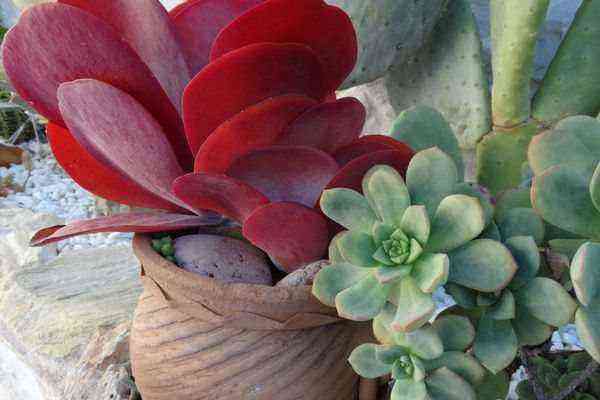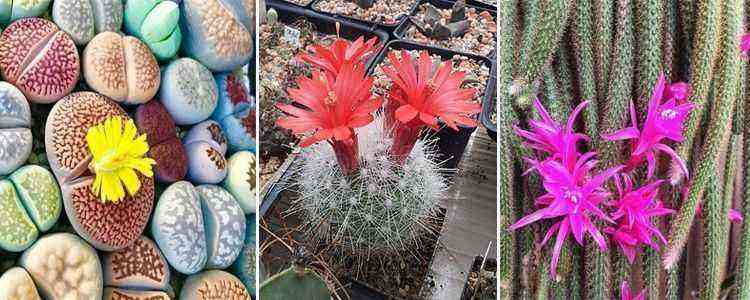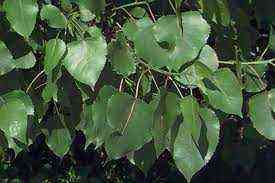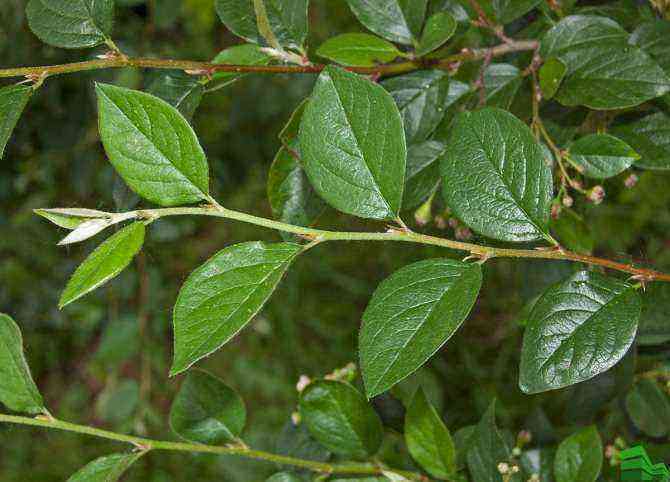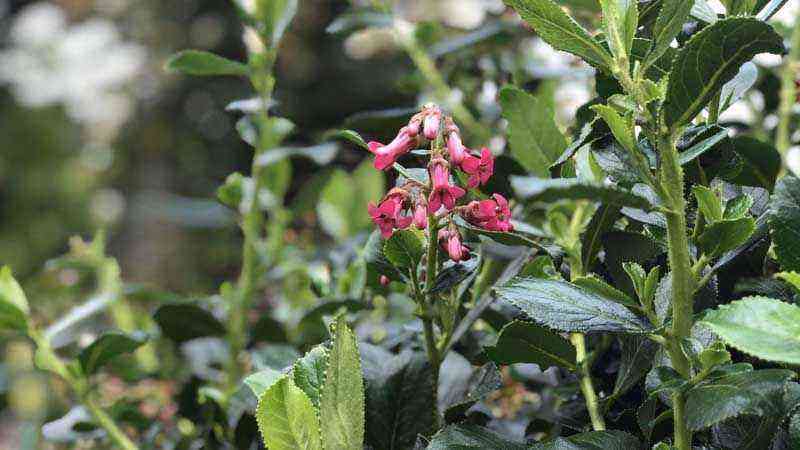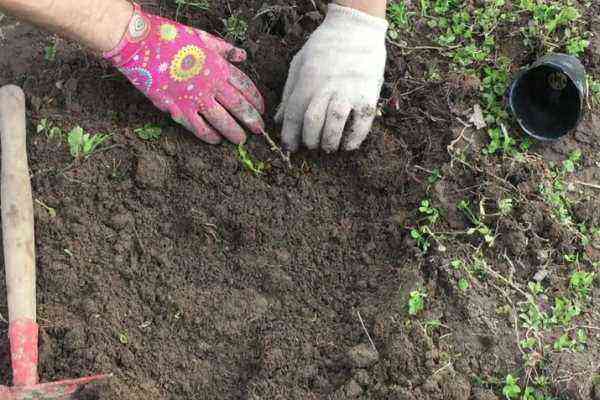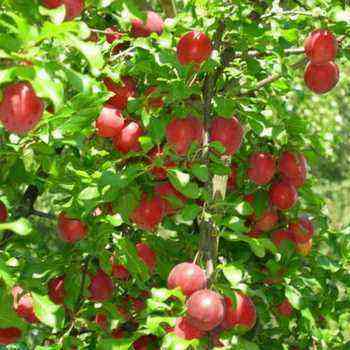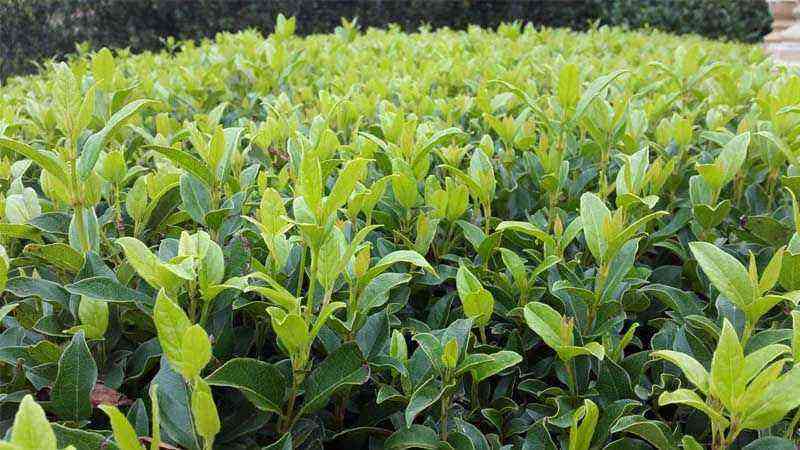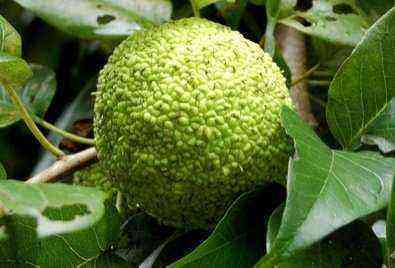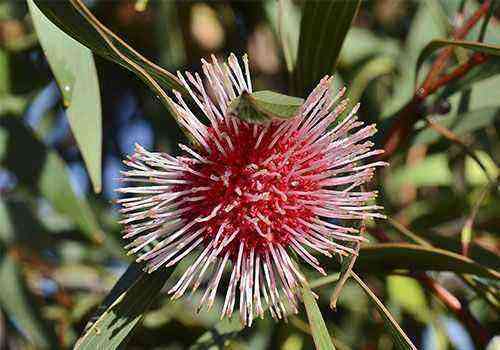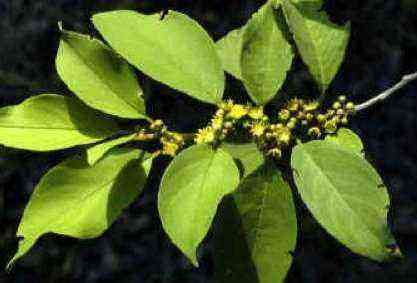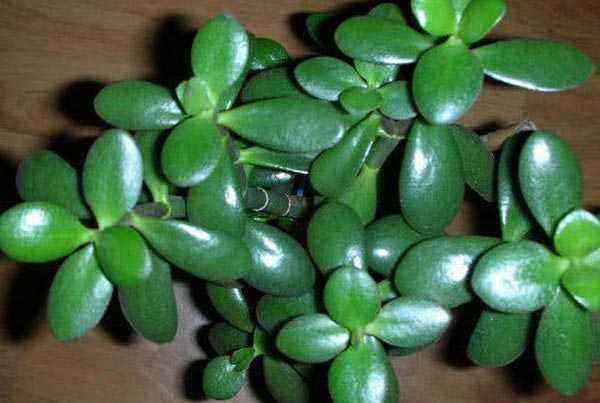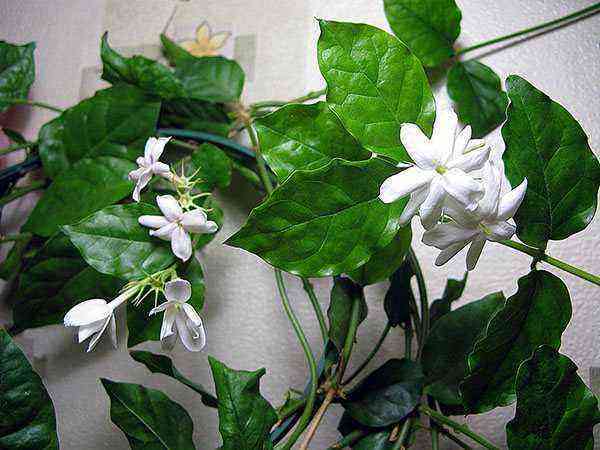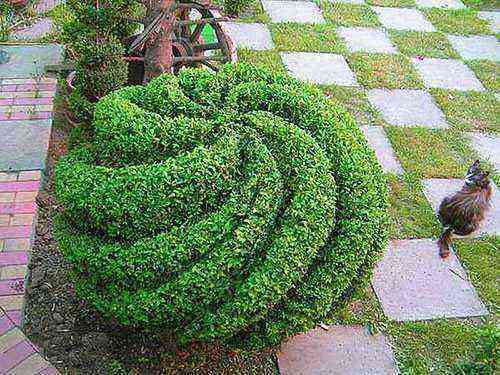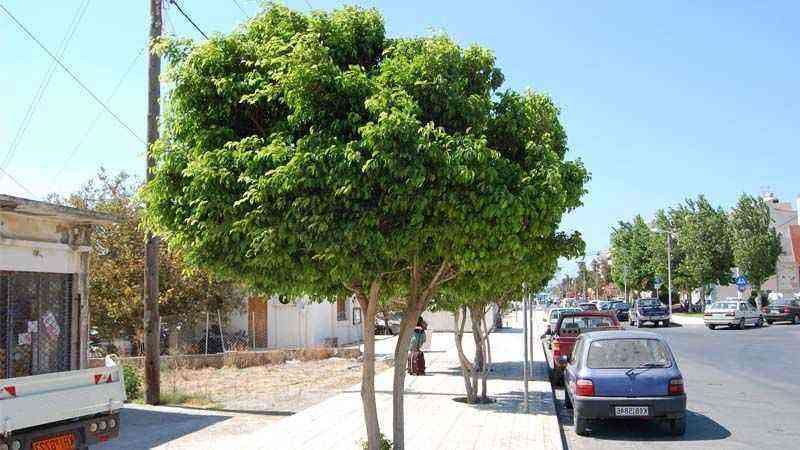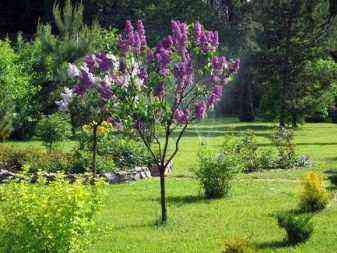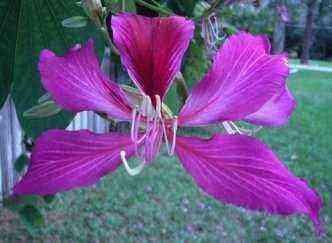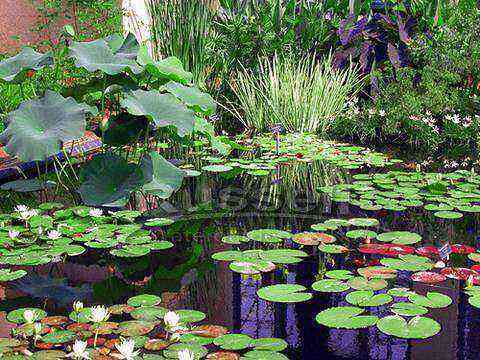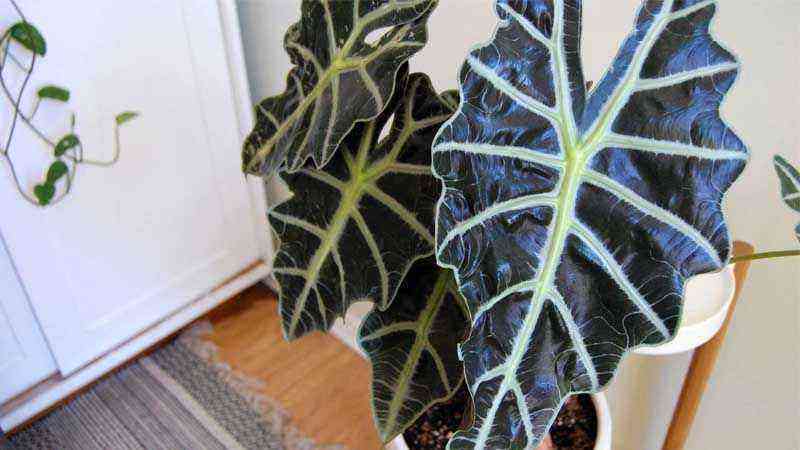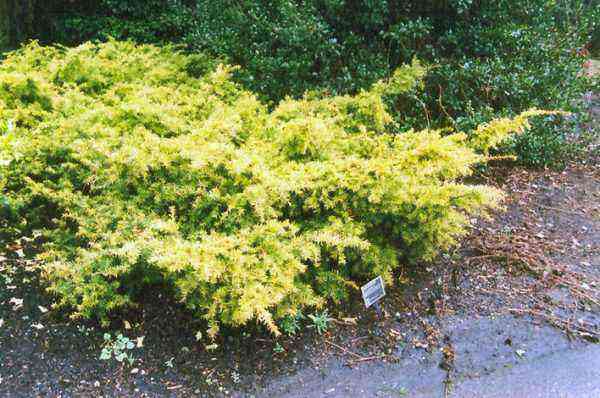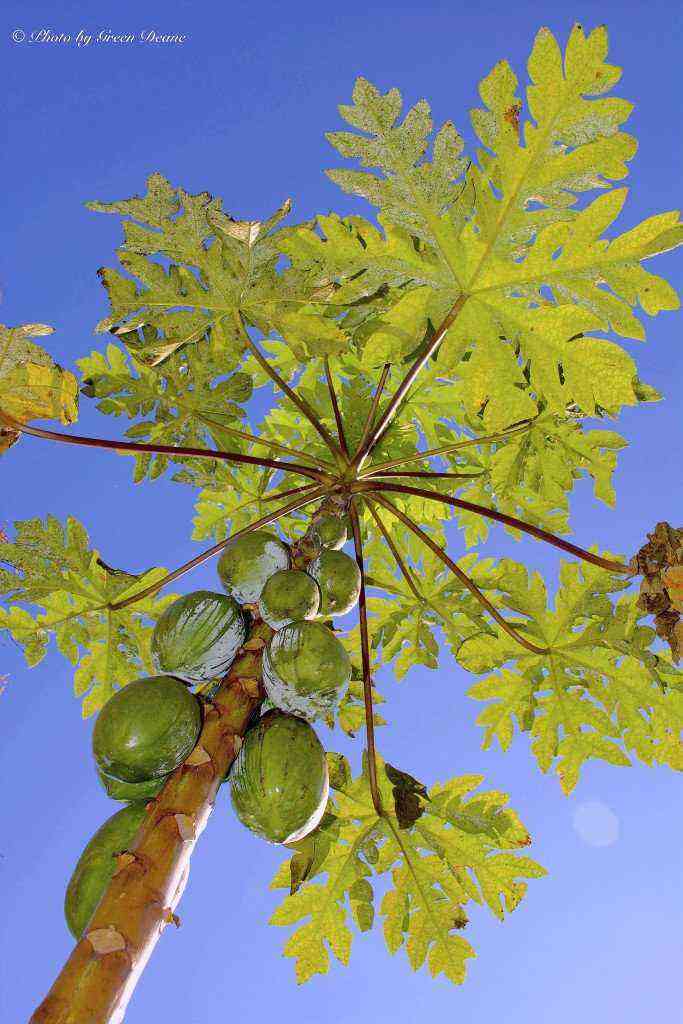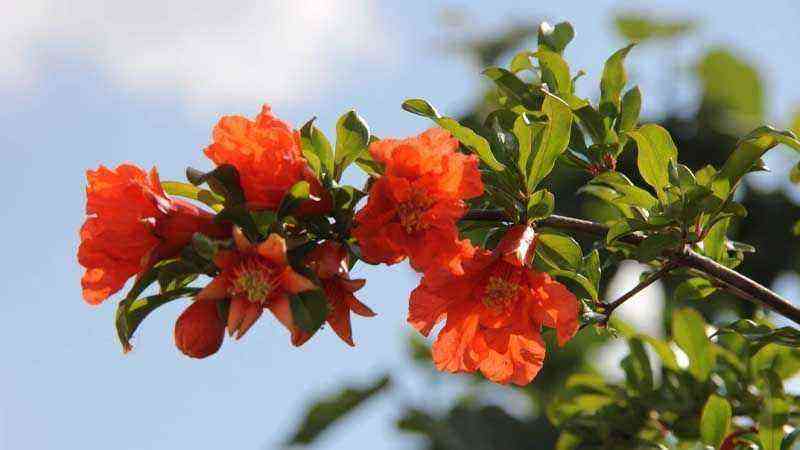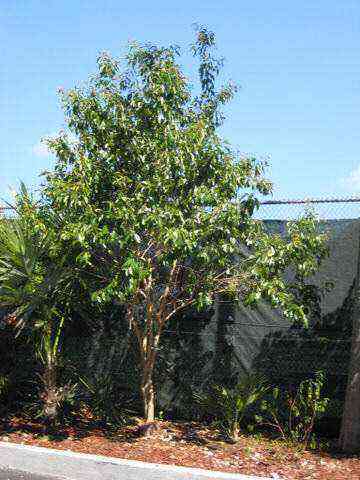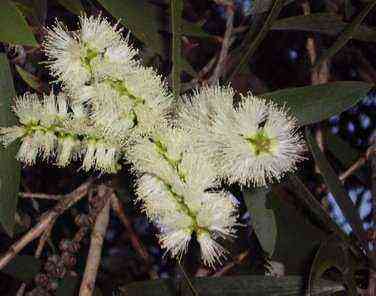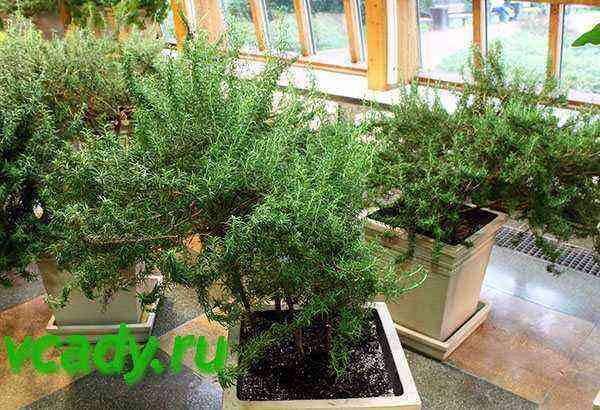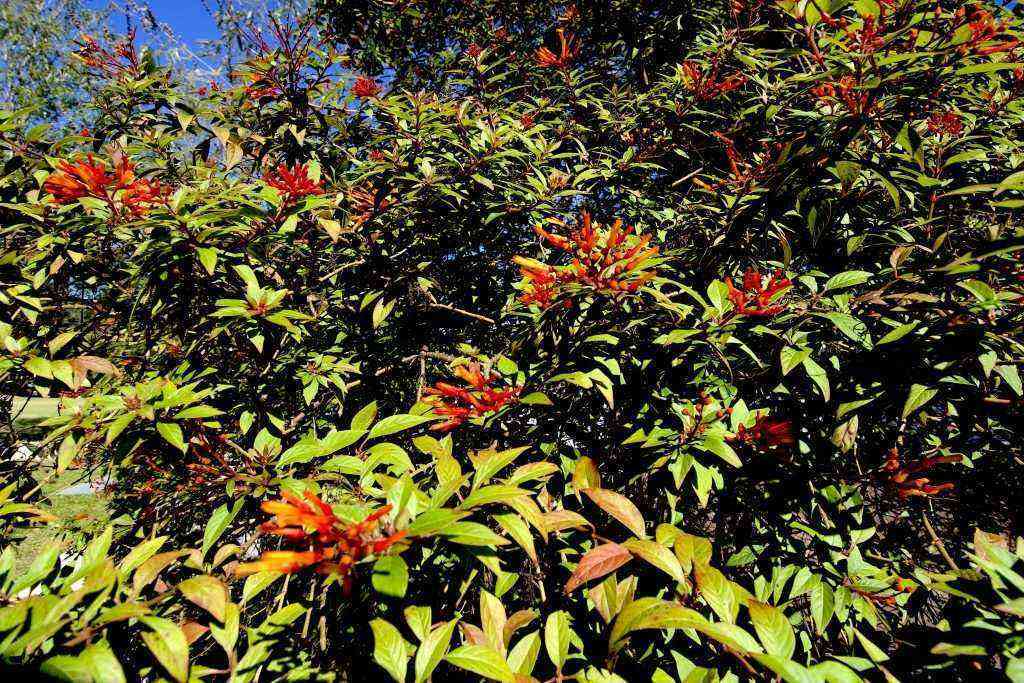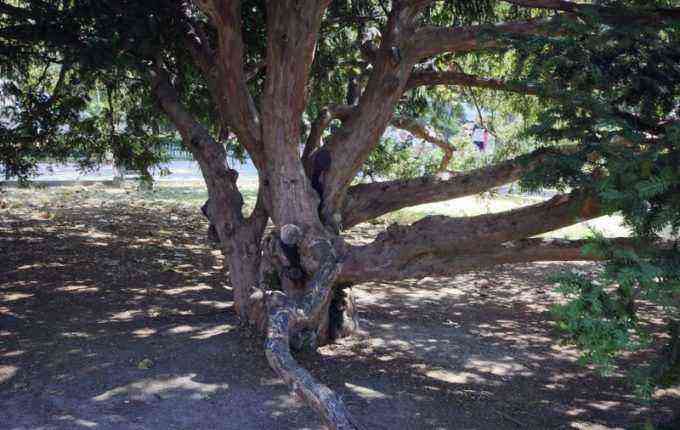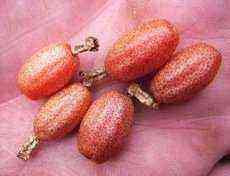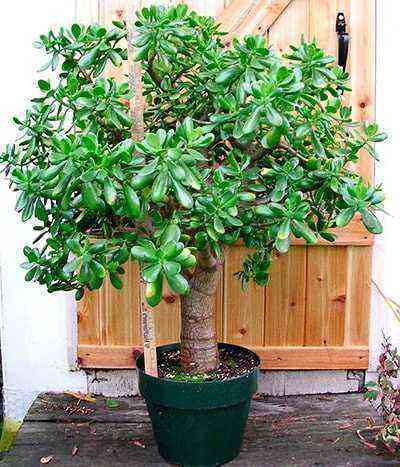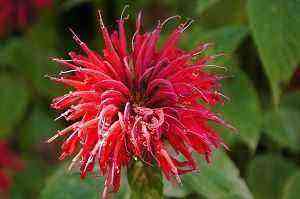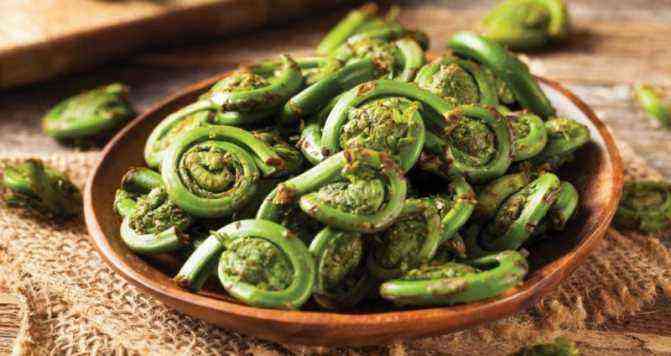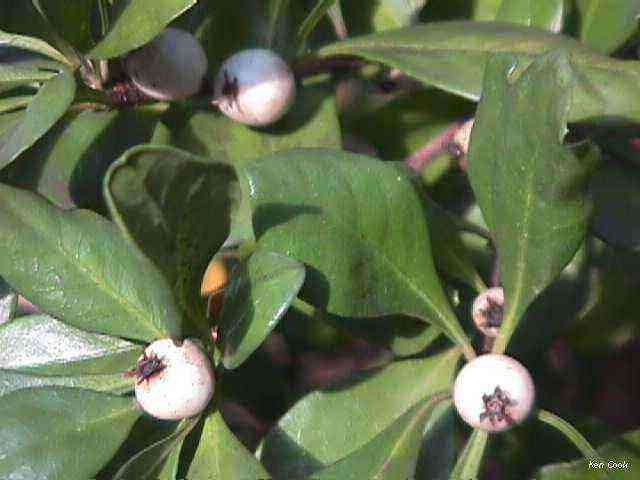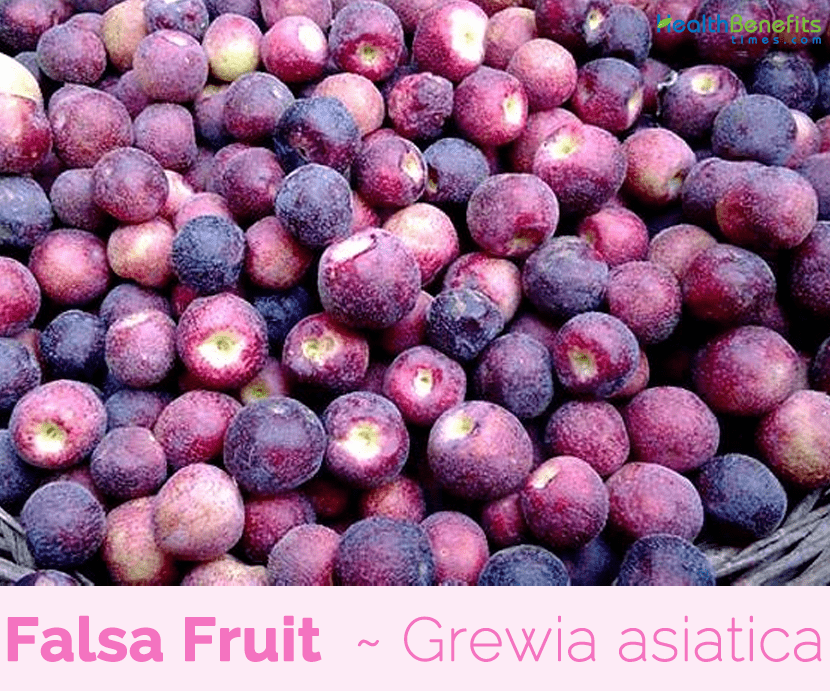The small genus Cotyledon belongs to the Tolstyankov family. According to various sources, there are from 10 to 50 plant species. It is very unpretentious in care, therefore it is common among amateur flower growers. Does not require special knowledge of care. It grows well under basic conditions.
In nature, it grows in the Arabian Peninsula, Ethiopia and South America. All representatives of the genus Cotyledon are short shrubs. Has a very high fragility of the stems. Over time, the stems become lignified. The root system is fibrous. The leaves themselves are petiolate or short-petiolate, opposite, each subsequent pair on the stem is located, as a rule, at 90 degrees to the previous one. Some species form rosettes. Peduncles appear either from the tops of the plants or from the rosettes.
Types
In the Tolstyankovye family and the Cotiledon genus, there are up to 40 species of succulents. At home, about 10 species are bred, only four of them are common. They are suitable for drawing up a variety of flower arrangements.
We list some types of cotyledon:
- Rounded,
- Wavy,
- Felt,
- Cacaloid,
- Lady Smith,
- Levizia,
- Saxifrage,
- Colloidal,
- Large-flowered,
- Chestnut.
Popular views with photos
Cotyledon attracts flower growers with its unpretentiousness and many varieties suitable for cultivation at home.
Cotyledon orbicular Cotyledonorbiculata
Most popular among plant breeders. Rounded cotyledon is a shrub with round, smooth leaves ranging in size from 7 to 13 cm. They are covered with a thin waxy coating, which is why they look whitish.
Under natural conditions, the height of the plant varies from 90 to 130 cm, at home the flower grows up to 50 cm… Cotyledon blooms with small orange-red flowers.
Cotyledon wavy Cotyledonundulata
In contrast to the rounded variety, the flower has leaves with wavy edges, which are large in size. Cotyledon is covered with a waxy coating, which makes the plant look bluish. The flower stalk is burgundy, long, the corollas are orange-yellow.
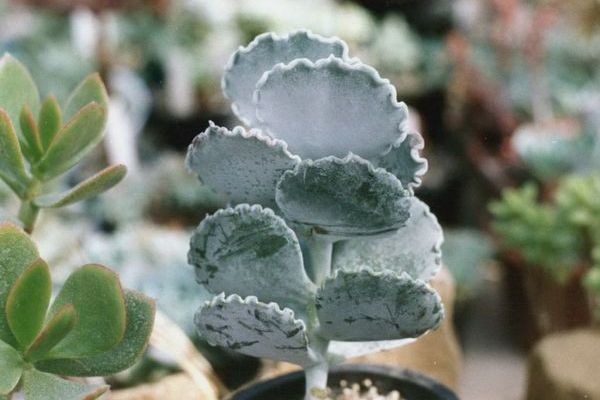

Felt cotyledon Cotyledon tomentosa
The miniature plant reaches a height of only 10-15 cm, for which flower growers love it dearly. A small flower can become a real decoration of the desktop, as it is very decorative.
At the ends of small ovoid leaves there are elongated teeth painted in a reddish-burgundy hue. The plant does not have a wax coating, like its counterparts, the leaves are covered with fluff, thanks to which the cotyledon tomentosa got its name.
Second the name – “bear paw” – the flower got due to the unusual shape of the leaf plate.
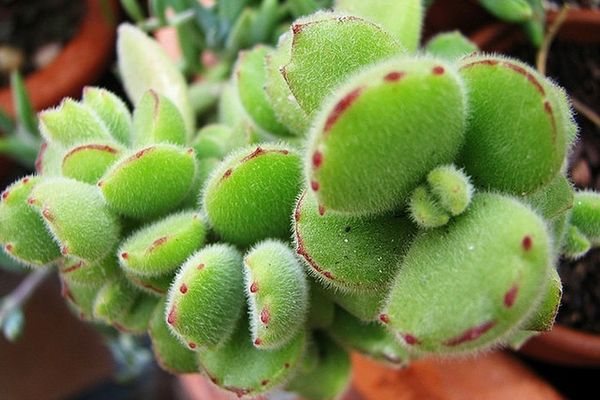

Cotyledon Lady Smith Cotyledon ladismithiensis
A subspecies of a felt plant. Cotyledon Lady Smith has a similar leaf shape, but the pubescence is a beautiful silvery shade.
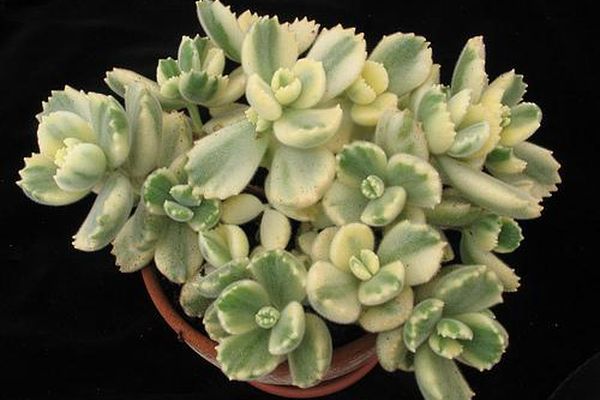
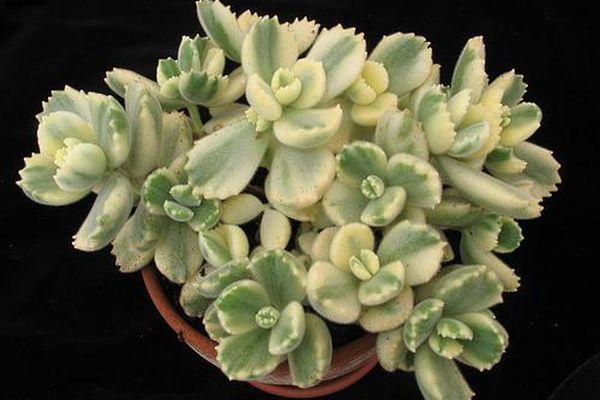
Котиледон левизия Cotyledon lewisia
The perennial compares favorably with other plant varieties with its dense, beautiful flowering of pink or white flowers. The arrangement of short peduncles creates a kind of crown of corollas above the succulent rosette.

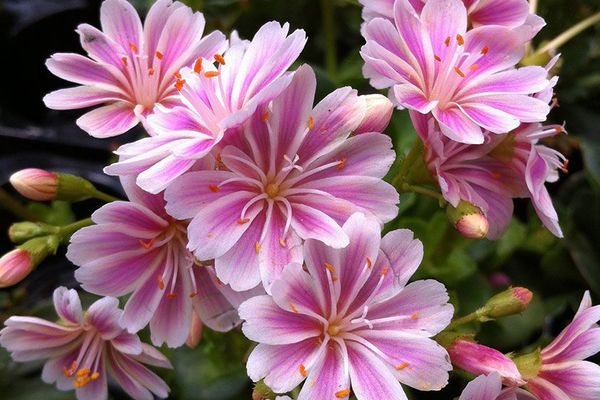
Cotyledon macrantha berger
The plant is quite tall, the size of an adult flower is about 80 cm. Fleshy green leaves are decorated with a burgundy border. Peduncles are long, crowned with large bell-shaped flowers of orange hue.

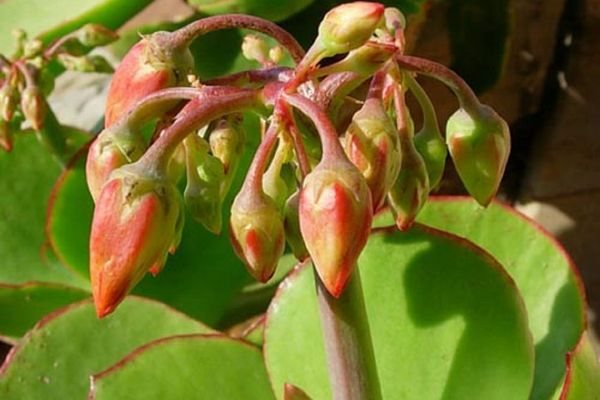
Cotyledon papillaris
Succulent, unlike other varieties, has not flat, but rounded leaves. Young shoots of the plant stand out with a pinkish tint that disappears in the process of maturation. Peduncle is long, fragile; corollas are yellow.
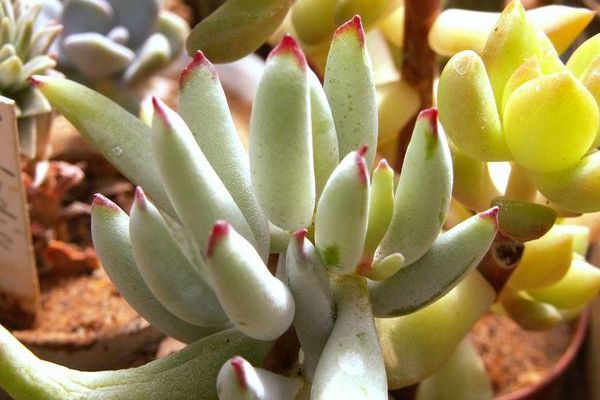

Cotyledon undula
The variety is similar to the wavy variety. The differences lie in the size of the leaves: the subspecies of undulata has a more modest size.

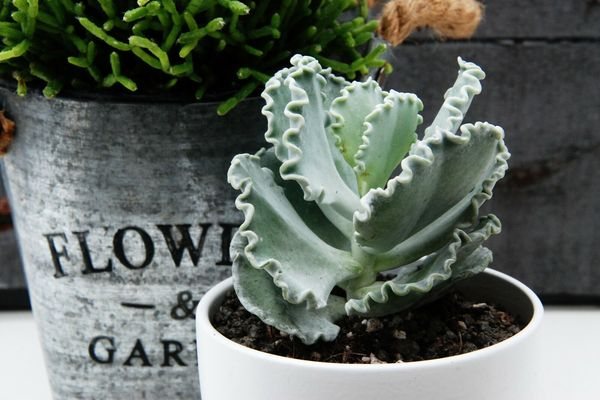
Tree-like
Cotyledon of this variety is distinguished by branched lateral shoots. They give the succulent the appearance of a tree. The plant has small rounded fleshy leaves of a green tint. Under optimal growing conditions, perennials can reach a height of 1–1,2 m.


Saxifrage
Outwardly, the flower resembles a beautiful rosette, its leaves are located close to each other, do not have large internodes. The leaves are framed with a burgundy border. Succulent blooms in early June with white flowers with reddish-pink cores.


Colloidal
The branching of the shoots of the plant starts from the root zone, which makes the flower look like a shrub. Stems are slightly curved, densely covered with small reddish leaves. Peduncle is long, flowers are bright orange.

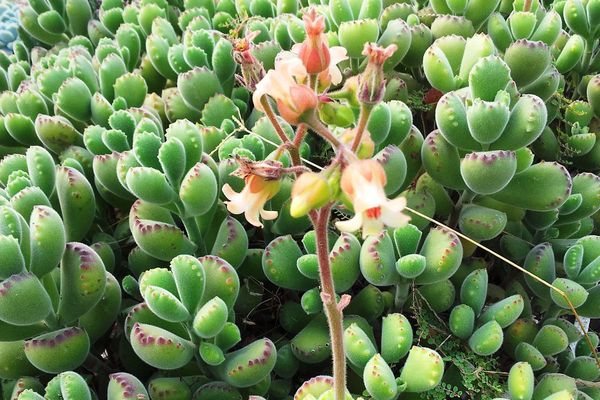
Elizabeth Eliase
The dense bush has fleshy, spatulate leaves of a rich green hue. Plant height reaches 10-30 cm.

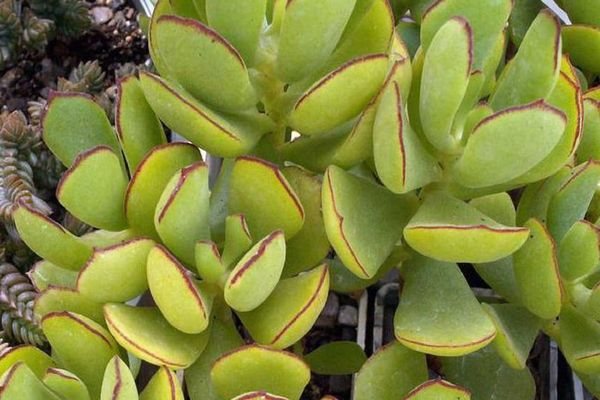
The flowers are bell-shaped, with curved petals, orange.
Interesting! Due to the external resemblance to the plant, the structural unit of the human placenta was named “cotyledon of the placenta”.
Lighting and temperatures
South facing windows with direct sunlight are ideal for cotyledon. On the east and west windows, cotyledon will grow, but there will not be enough light for it to bloom.
If the shoots are very elongated, and the leaves have become smaller and have lost their brightness, it is necessary to add sunlight or additional lighting to increase daylight hours.
In summer, cotyledon grows well in the garden or on the balcony. Summer temperatures for cotyledon are required in the range of 19-25 ° C, and winter boundaries during its dormant period are 10-12 ° C. Rest is essential for the flower to start blooming on time.
Home care for cotyledone


This plant is not distinguished by its exacting care.
Illumination
Cotyledon needs bright light with direct sunlight, so a south-facing window is recommended for placement. Also, such a flower grows quite normally on the windows of the western and eastern directions, but in this case it may not bloom.
To understand that there is little light, you can look at the elongated stems and shredded leaf plates.
Temperature conditions
In summer, the plant thrives best at temperatures between 18 and 20 degrees. It is worth remembering that at this time it needs very frequent ventilation. It is best to move it outside (in the garden, on the balcony) in the warm season.
In winter, such a succulent plant needs coolness (from 10 to 15 degrees). If the room is colder, then the plant, as a rule, gets sick – its foliage becomes soft and lethargic. Warm wintering is not recommended for cotyledon, because in this case it may not start flowering.
How to water
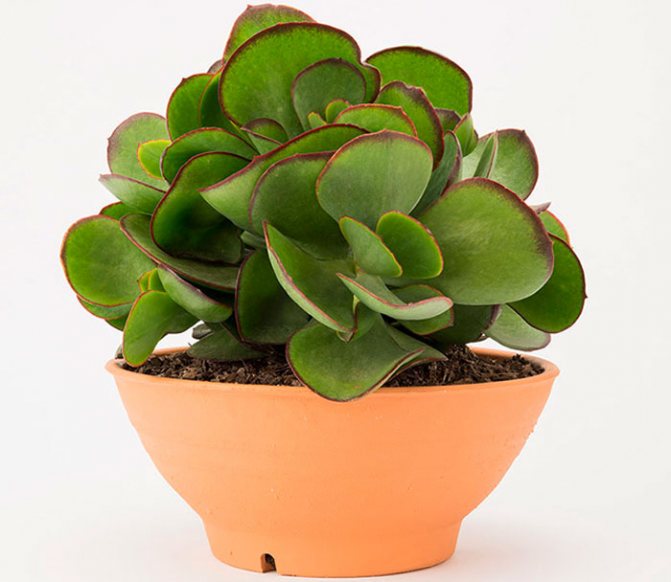
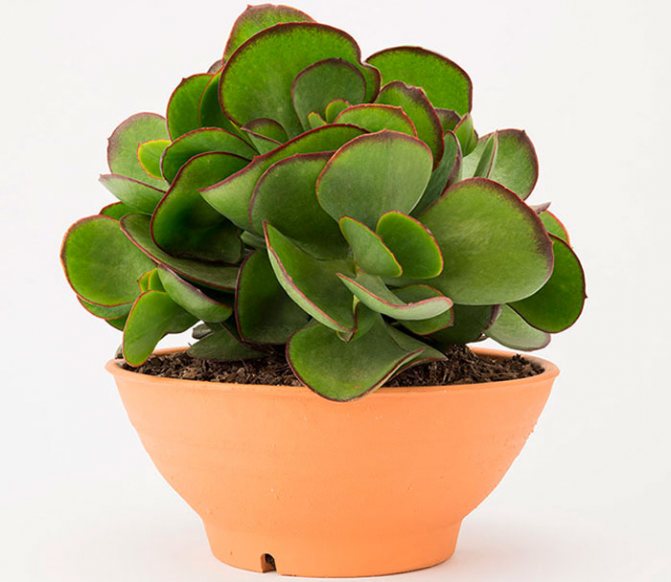
This plant is accustomed to arid climates. In this regard, watering is carried out quite carefully. In the summer, you need to water only after the substrate is thoroughly dry. With a cool wintering, watering may not be carried out at all. If wintering is warm, then watered in the same way as in summer.
If liquid stagnates systematically in the soil, this will contribute to the development of root, as well as leaf rot.
Pour with soft water at room temperature, which must be well settled before that.
Humidity
It grows and develops quite normally at low air humidity in a city apartment. He does not need to additionally increase the humidity of the air in any way.
Features of trimming
Does not need shaping scraps. However, it is recommended to carry out a systematic pinching of tall plants in order to restrain their growth.
Earth mixture

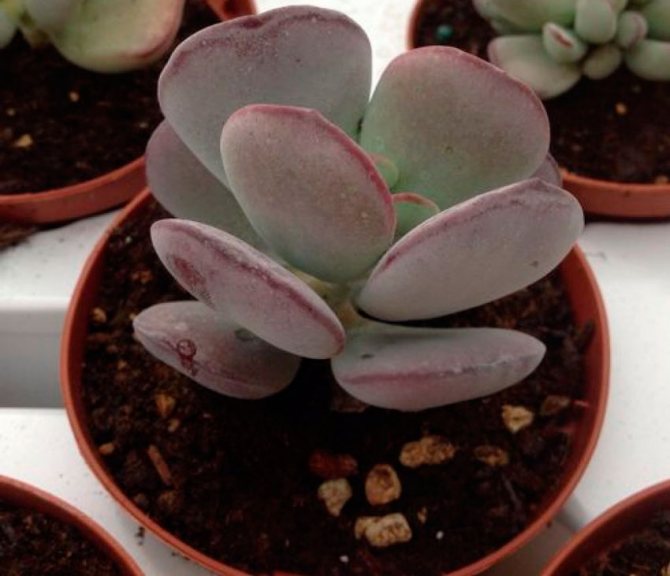
Suitable soil should be rocky, loose and nutrient-poor. To prepare a soil mixture, you need to combine leaf and clay-sod soil, fine gravel and coarse sand, while taking them in equal proportions. You also need to add a small amount of charcoal and bone meal to the mixture.
For planting, you can also purchase ready-made soil for cacti and succulents, but you need to add broken expanded clay into it.
Fertilizer
Such a plant hardly needs feeding. So, in the spring-autumn period, he will need only 3 or 4 additional feeding. For this, it is recommended to use a special fertilizer for cacti. In winter, feeding is stopped.
Transplant Features
Since such a flower grows rather slowly and does not have a very large root system, it is often not necessary to transplant it. The crown will tell you that it is worth replanting the plant. So, if its diameter has become larger than the diameter of the container, then it is worth transplanting into a larger pot. So, adult specimens are transplanted, as a rule, 1 time in 3 years, and young ones – a little more often.
Methods of reproduction
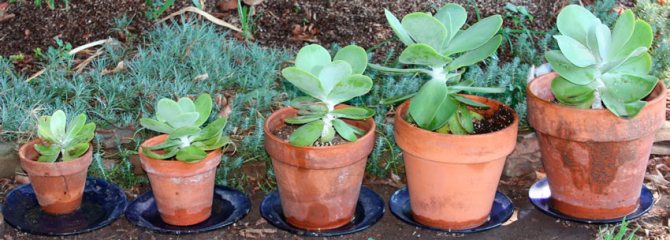

It can be propagated by cuttings and seeds. Sowing seeds should be done in spring and follow the instructions on the package exactly. Seeds sprout quite well, but it will take some effort to get an adult specimen from a seedling.
Propagation by cuttings is very easy. They are planted in moist river coarse sand. Rooting takes place, as a rule, after 4 weeks.
Pests and diseases
A mealybug can settle on a plant. Such a pest can be removed with cotton wool swabs moistened with alcohol. For severe contamination, treat with a suitable chemical.
If in the summer cotyledon is in the garden, then snails can settle on it. In this regard, it is better not to allow the container to come into contact with garden soil or other plants.
Sufficiently resistant to disease. However, rot may occur due to over-watering.
In the summer, some of the foliage may fall off, which is quite natural.
Caution! Most species, including those grown indoors, contain strong toxic substances. In this regard, you need to work with a flower carefully, and choose a place for it that is hard to reach for children and animals.
Watering and humidity
The arid climate of nature has hardened cotyledon, it should be watered in moderation, after waiting for the soil to dry out. In winter, at low temperatures of rest, you can generally forget about watering it.
A good drainage layer in the pot is imperative.
Cotyledon can rarely be sprayed and washed; it has no complaints about humidity.
Water is taken soft at room temperature.


Felt cotyledon.
Features of the genus of succulents Cotyledon
The succulent plant Cotyledon is a perennial representative of the Crassulaceae family. The birthplace of this culture is Africa. The bushes are of incredible decorative beauty, they look good in containers, and are also used to form bonsai.


Cotyledon rounded in the desert
The duration of flowering of cotyledon is almost the whole summer. The flower begins to delight in March and continues until August. Flowers of a tubular configuration, beautiful paniculate inflorescences are formed. The buds resemble bells, the petals are glossy. They can be yellowish, white, orangey. Peduncle height – up to 0,2-0,3 meters.
The root system of the succulent is fibrous, and the stems are usually branched. The height of the bush is up to 0,3-0,7 meters, it does not grow much over the year. Stems and leaves can be light green or even bluish, but reddish tones are often observed. As it forms, the stem will become woody, and a brown bark will form.
The leaves are distinguished by short petioles, they may not have them at all. The sheet plate is of different shapes, depending on the variety. They can be in the form of a triangle, circle, rhombus, oval. The color is either solid or variegated. There are also species with contrasting eyeliner. The leaves are also full of white hairs.
Soil and transplants
In nature, the succulent cotyledon chooses stony and poor soils. For a soil mixture at room conditions, mix turf, leafy soil, coarse sand and fine gravel, you can add charcoal.
If you buy ready-made soil, then it is suitable for both cacti.
A cotyledon transplant is only required as it grows. It grows slowly. The decision to transplant is made when the crown has outgrown the diameter of the pot. It turns out a transplant from the experience of breeding cotyledon about once every three years.
Care
Watering
Cotyledon comes from arid, but not very hot areas, which is quite consistent with the dry air of city apartments.
- Watering all types of this succulent is necessary after the soil substrate is completely dry. With a cool dormant period (10-12 degrees), watering is stopped.
- If during the rest period the temperature remains the same, then watering is carried out as usual.
- If the temperature rises to 28-30 degrees, watering can be done more often.
- Constant moist soil and low temperatures can lead to rot and death of the plant.
- Water for irrigation should be taken at room temperature, settled or filtered water.
Lighting
Cotyledon prefers bright lighting and long daylight hours. During the hours of the active sun (at noon), the plant must be shaded to avoid burns. Plants are best placed on the south and east windows.
With a lack of light, Cotyledon sheds leaves, stretches, turns pale in color, stops blooming.
Temperature
The most optimal temperature range in summer is 20-25 degrees. At this time, you can take your plants out into the fresh air: an open balcony, a terrace or on the veranda of a summer cottage.
During the dormant period (in winter) 10-12 degrees, it is quite a comfortable temperature for the plant to rest and get ready for long flowering. During this period, it is better not to water succulents, only if the leaves have lost their elasticity, you can slightly moisten the substrate.


Humidity
Cotyledon needs dry air, the same as in nature. Only on the hottest days can you spray with lukewarm water, making sure that no water accumulates in the rosettes of the leaves.
If the room is humid for some reason, it is better to take the succulents out to fresh air.
soil
In nature, these types of succulents grow on poor soils. Therefore, for the house it is necessary to prepare a soil substrate similar to natural soil. It is composed of:
- 1 part of clay-sod land.
- 1 piece of leafy land.
- 1 part washed coarse river sand
- Some zeolite.
- A little crushed charcoal, bone meal.
- Small fraction expanded clay.
Mix all components thoroughly to get an airy, loose mixture. The earth must be warmed up in the oven, and river sand and expanded clay are washed in a weak solution of potassium permanganate for disinfection. This mixture is suitable for both plant transplantation and propagation by cuttings. If it is not possible to compose the substrate yourself, you can buy a ready-made potting soil mixture for cacti in a specialized flower shop.
Transfer
Cotyledon has a fibrous root system, so plants are transplanted by transferring. Remember to replace the old drain with a new one. This should be done in the spring. The signal for the need for a transplant is the foliage of the entire area of the container. Adult plants are transplanted into pots 2-3 cm larger in diameter once every three years. Succulent grows slowly, so young plants should not be transplanted – this causes unnecessary trauma.
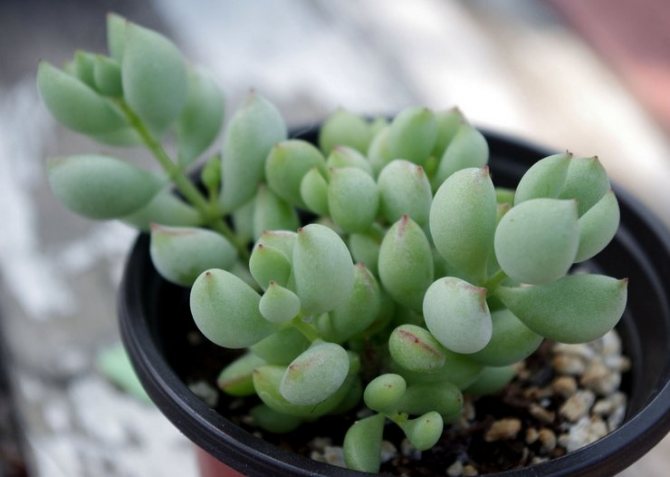

Fertilizer
Apply only during the active period. During the dormant period, fertilizers are not applied. Begin fertilizing once a month before the flowering period. Fertilizer is applied after watering. Zeolite absorbs minerals along with water, then gradually releases them.
Since succulents in nature grow on poor lands, overfeeding the plants leads to fattening them, they can shed their leaves or give poor flowering.
Diseases and pests
The most dangerous pest for Cotyledon is the mealybug. You need to deal with it with a conventional fungicidal agent. Check carefully before buying the plant itself. Most often, infection occurs in the store.
The succulent is not afraid of diseases, except for plant care errors. With waterlogging and lack of light and fresh air, decay of certain parts of the plants can develop.
Reproduction
Cotyledon is propagated by seeds and cuttings. The seeds are purchased from the store. The percentage of germination of sown seeds in spring in a light soil of sand and leafy soil is quite high. The crops are covered with foil, airing and spraying daily. The first leaves will appear in three weeks. In this case, it is more difficult to grow seedlings to an adult plant. Young shoots are prone to root rot and should be watered very carefully.
The easiest way to get a new plant is by cuttings. To do this, cut off the tops with four leaves. Day and night wither them. Within a month, each cutting will take root in wet sand. The temperature is kept within 18 ° C.
Propagation of cotyledon by cuttings and leaves
Cotyledon cuttings photo
As cuttings, you need to choose tops with 2-4 leaves, or even just leaves. Carefully make an incision, sprinkle the cut with crushed charcoal and air dry for 16 hours. Then plant the scion in a peat-sand mixture and moisten it carefully. During rooting, keep the air temperature between 18-XNUMX ° C.
Transplant timing and technology
The procedure is carried out in the spring. Cotyledon grows slowly, so you should focus on the filling of the flowerpot with the root system. At first, transplant once every 1-1 years, then every 2-2 years.
It is better not to touch a large plant so as not to break fragile stems and leaves. Wear gloves to avoid getting burned by the poisonous juice.
Take the pot more than the previous one by only 2-4 cm, carry out the operation by the transshipment method. There must be a drainage layer of at least 2 cm. Next, you need to pour 3-4 cm of fresh substrate, put an earthen lump with roots. Cover the space formed on the sides with earth. Water the plant, do not feed for about a month.
Watering the cotyledon
Watering is needed moderate. Cotyledon is used to constant droughts. It is very simple to determine the frequency of watering, for this you need to wait until the soil is completely dry. Some are able to determine this by the lightness of the pot, while others can simply use a regular wooden skewer.
To do this, it is stuck along the edge of the pot (so as not to damage the delicate roots), until it stops (to the bottom), then it is removed, and if the stick remains dry, then boldly water it.
As for increasing the humidity of the air by spraying the plant, then you should not adhere to any rules and maintain periodicity. Dry air is not a problem for cotyledon. But he will not refuse from periodic spraying or washing in the shower.
One has only to be careful and prevent the accumulation of liquid in the rosettes of the leaves, which can lead to diseases (rot).
